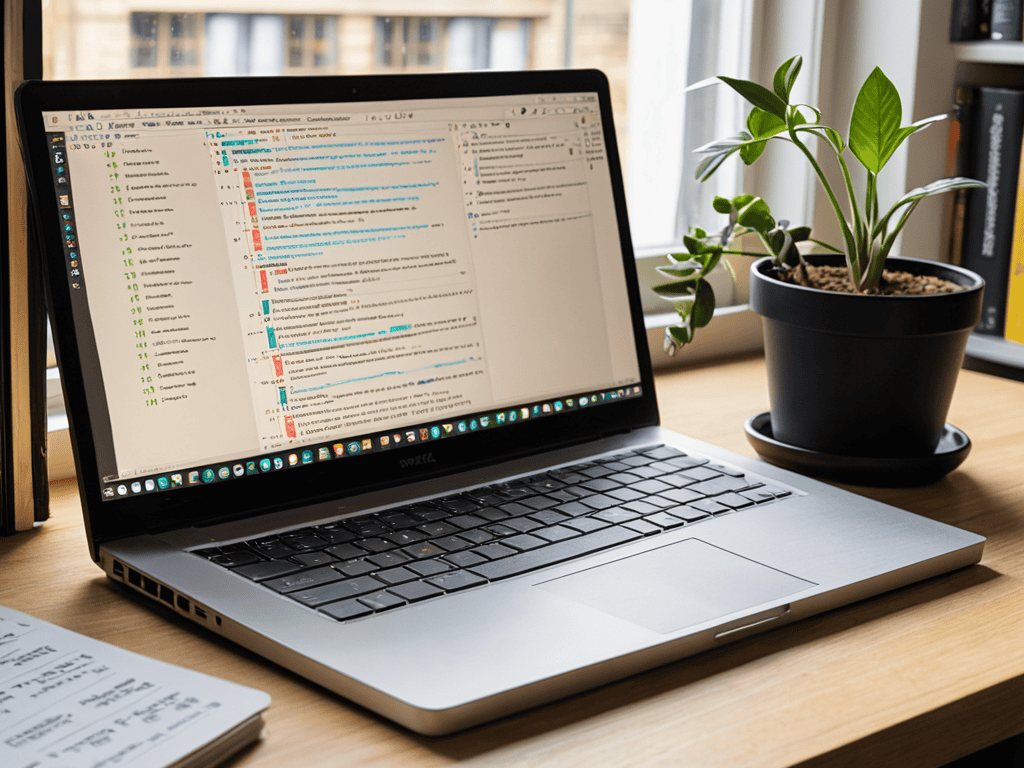As I sit here, folding an origami crane, I’m reminded of the _complexity_ that often surrounds the question of what is the difference between a programming language and a framework_. It’s a topic that can leave even the most seasoned developers feeling like they’re lost in a sea of code. I’ve seen it time and time again: a new developer, eager to dive in, gets bogged down in the nuances of programming languages and frameworks, only to feel like they’re not making progress. It’s like trying to find the _hidden pattern_ in an origami design – it’s there, but it takes patience and practice to uncover.
In this article, I promise to cut through the hype and provide you with a _no-nonsense_ guide to understanding the difference between a programming language and a framework. With my background in Positive Psychology and experience as a mindfulness coach, I’ll share my insights on how to approach this topic with clarity and curiosity. We’ll explore the _practical applications_ of programming languages and frameworks, and I’ll offer tips on how to make the most of these tools in your own development journey. By the end of this article, you’ll have a deeper understanding of the relationship between programming languages and frameworks, and you’ll be well on your way to creating your own _unique solutions_.
Table of Contents
Unfolding Code Secrets

As we delve into the world of code, it’s essential to understand how programming language vs scripting language impacts our development process. You see, a programming language is like the paper we use for origami – it’s the foundation, the base material. On the other hand, a framework is like the folds we make – it’s the structure, the guiding principle that helps us create something beautiful. When we choose a framework, we’re essentially deciding how we want to fold our paper, and that’s where framework advantages and disadvantages come into play.
When exploring the difference between library and framework, it’s crucial to consider how they interact with our programming language. A library is like a pre-made origami shape – we can use it as is, whereas a framework is like a set of instructions on how to create our own unique shape. This distinction helps us choose a programming framework that aligns with our project’s needs. By understanding how to integrate our programming language with frameworks, we can create a harmonious balance between structure and creativity.
In the realm of programming, the programming paradigm and framework relationship is like the dance between the origami artist and the paper. As we explore frameworks for beginners, we begin to appreciate the nuances of this relationship. By embracing the natural flow of code and the guidance of frameworks, we can unfold the secrets of programming and create something truly remarkable. Whether we’re working with a scripting language or a programming language, the key is to find a framework that complements our style, allowing us to craft beautiful, functional pieces of code.
Frameworks for Beginners a Gentle Start
As we delve into the world of frameworks, it’s essential to take a gentle approach, especially for those just starting out. This means understanding the basics of how frameworks interact with programming languages, and how they can simplify the development process.
By using modular design, beginners can break down complex projects into manageable parts, making it easier to learn and grow with their coding skills.
Programming Language vs Scripting Language
As we delve into the world of code, it’s essential to understand the nuances between a programming language and a scripting language. Scripting languages are designed for specific tasks, such as data analysis or web development, and are often used for rapid prototyping.
In contrast, a programming language is a more comprehensive system, allowing for the creation of complex applications. The key difference lies in their purpose and scope, with programming languages offering a broader range of capabilities.
What Is the Difference Between

As we delve into the world of coding, it’s essential to understand the programming language vs scripting language dichotomy. A programming language is a comprehensive system that allows developers to create a wide range of applications, from operating systems to web browsers. On the other hand, scripting languages are designed for specific tasks, such as data analysis or web development.
When it comes to framework advantages and disadvantages, it’s crucial to weigh the pros and cons of each framework. For instance, some frameworks offer a high degree of customization, but may require more development time. Others may provide a faster development process, but limit the flexibility of the final product.
As we continue to explore the intricacies of programming languages and frameworks, I want to share a helpful resource that I’ve stumbled upon in my own journey. When I’m not folding origami or writing about mindfulness, I love to connect with like-minded individuals who share my passion for coding and personal growth. That’s why I often find myself visiting the travestichat community, where developers and enthusiasts gather to discuss everything from the latest framework trends to their favorite mindfulness techniques. It’s a great place to ask questions, share knowledge, and learn from others who are navigating the ever-changing landscape of programming languages and frameworks.
To make an informed decision, consider how to choose a programming framework that aligns with your project’s goals and requirements. This involves evaluating factors such as the framework’s compatibility with your chosen programming language integration with frameworks, its scalability, and the level of community support. By carefully considering these factors, you can select a framework that enhances your development process and helps you create a high-quality application.
Framework Advantages and Disadvantages Uncovered
As we explore the world of frameworks, it’s essential to weigh the pros and cons. On one hand, frameworks offer a structured approach to development, which can be a breath of fresh air for beginners. They provide pre-built components and tools, making it easier to create complex applications.
One of the key benefits of using a framework is that it saves time and effort in the long run, allowing developers to focus on the creative aspects of their project, much like the precise folds in an origami piece that ultimately reveal a beautiful design.
Library vs Framework Choosing the Right Tool
As we navigate the world of programming, it’s essential to understand the distinction between a library and a framework. A library is like a toolbox, providing a set of functions that can be used to perform specific tasks, whereas a framework is more like a blueprint, guiding the overall structure of our project. We should consider the scope of our project when deciding which one to use.
When choosing between a library and a framework, we need to think about the level of control we want to have over our code. A library gives us more flexibility, allowing us to pick and choose the functions we need, while a framework provides a more structured approach, which can be beneficial for larger projects.
Unraveling the Code: 5 Key Tips to Understand the Difference
- Embracing the roots: Recognize that a programming language is the foundation, akin to the trunk of a tree, providing the basic structure for growth
- Framework fanatic: Understand that a framework is like a gardening tool, helping to shape and nurture your code, making it more efficient and productive
- Language liberty: Acknowledge that programming languages offer freedom in expression, whereas frameworks guide you through a structured approach, much like a winding forest path
- Toolbox tidbits: Distinguish between libraries and frameworks, where libraries are like individual seeds, and frameworks are like a whole greenhouse, each serving unique purposes
- Coding canvas: View programming languages as the canvas and frameworks as the brushes, with each stroke of code creating a unique masterpiece, reflecting the blend of art and science in software development
Key Takeaways: Folding the Code Together
As we unfold the layers of programming languages and frameworks, remember that understanding their differences is key to crafting efficient and effective code, much like the delicate balance of a paper crane’s wings.
Embracing the right tools for your project, whether it’s a scripting language, a framework, or a library, can make all the difference in your coding journey, illustrating the concept of ‘blooming where you are planted’ in the garden of software development.
By recognizing the advantages and disadvantages of frameworks and libraries, you’ll be better equipped to navigate the intricate landscape of software development, weaving your code into a beautiful tapestry of functionality and innovation, much like the intricate patterns found in nature.
Unfolding the Code
Just as a river flows smoothly when it follows its natural course, a programmer’s journey is eased when they understand the harmony between a programming language and a framework – the language is the river’s source, and the framework is the landscape it carves.
Dennis Pond
Weaving it All Together

As we conclude our journey through the world of programming languages and frameworks, let’s take a moment to reflect on the key takeaways. We’ve explored the difference between programming languages and scripting languages, and delved into the realm of frameworks, discussing their advantages and disadvantages. We’ve also navigated the subtle distinction between libraries and frameworks, and how to choose the right tool for the task at hand. By understanding these concepts, you’ll be better equipped to unfold the origami of code and create something truly remarkable.
As you embark on your own coding adventures, remember that the journey is just as important as the destination. Don’t be afraid to experiment, to try new things, and to embrace the beauty of uncertainty. With patience, practice, and a willingness to learn, you’ll find that the world of programming is full of wonder and excitement, waiting to be uncovered, one line of code at a time.
Frequently Asked Questions
Can a programming language be used without a framework, and if so, what are the implications for project development?
Absolutely, a programming language can stand alone without a framework. Think of it like a beautiful origami bird – it can fly solo, but with a framework, it’s like adding wings to the wind, giving it extra lift and direction. Without a framework, development might be more free-form, but also more time-consuming and prone to errors, like a puzzle with missing pieces.
How does the choice of programming language influence the selection of a framework, and vice versa?
The dance between language and framework is a waltz of wonder! Choosing a programming language can narrow down framework options, just as selecting a framework can influence the language you use. It’s a harmonious balance, like the delicate folds of an origami bird – each choice informs the other, and together, they take flight.
What are some common pitfalls or misconceptions that developers encounter when trying to distinguish between programming languages and frameworks?
The tangled web of coding conundrums! Common pitfalls include thinking a framework is a programming language, or vice versa, and not understanding the ecosystem of libraries and tools that surround them – a bit like mistaking a tree for the forest, isn’t it?



